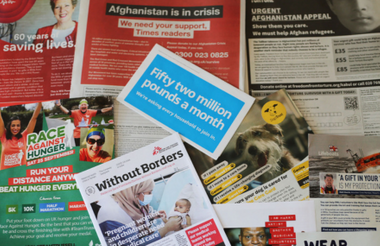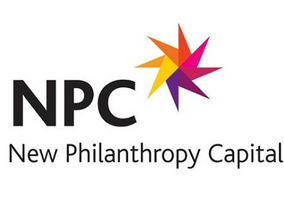There has been a decrease in the number of “pitiful” charity adverts in national newspapers, according to new research.
University of East Anglia (UEA) looked at what characters and subject matters were depicted in charity advertising campaigns supporting international causes in UK national newspapers.
Its report, Charity Representations of Distant Others, found that 52% of charity adverts in UK national newspapers focused on supporting international causes.
It categorised 11% of images as “pitiful” or using “shock tactics” – the adverts were from two organisations and portrayed children who suffer from trachoma and a cleft condition.
Compared to an earlier study in 2011-2014, this is a significant drop as their analysis found that 34% of the British adverts used “pitiful” images.
“On the whole, there is a marked difference in the organisation of cast and characters present in charity’s communications imagery and pitiful images are nearly entirely absent, while individuals are presented more as named than unnamed,” the new report says.
Some 56% of the images supporting international causes focused on countries in Africa.
The report found 50% of people depicted in the adverts were women and children. Only one image out of 541 included a mother, father and child.
It found 21% of those depicted were of children, which researchers say is a significant shift from a previous study in 2005-6 where 42% of all characters focused on children.
The report found 20% of all the images were of people characterised as professionals/leaders from the Global South, for example doctors, nurses and other development workers.
‘Marked difference’ in charity imagery
The report states: “In the past charities have been criticised for their shock tactics and using images of suffering to generate emotions of compassion and pity.”
Moreover, the sector has been made aware of the need to decolonise by removing stereotypes and the “white gaze”, it says.
The Black Lives Matter 2020 protests were a catalyst, and the Covid-19 pandemic was also instrumental in charities being forced to employ locally based photographers and filmmakers, according to the university.
Associate professor David Girling, from UEA’s School of Global Development, said: “This research proves that charities are making significant efforts to improve the representation of people in countries overseas.
“It is good to see that there are more professionals involved in development work portrayed in the images used by charities. It is also positive to see the reduction in the use of children as helpless victims.
“Saying that, most of the images of children are still passive and often with their mothers.
“Charities and NGOs must strive to present a more diverse cast of characters and consider the negative impact of Afro-centric representations of people in need.”
‘Ethical storytelling is not a buzzword’
Co-researcher Debbie Adesina, said: “This study reveals how charities have reacted positively to previous studies and critiques of ethical storytelling.
“But the research leaves us with more questions on the silence/erasure of whole family units in charity adverts. The representation of 'Africa' seems to be perpetually frozen in rural times. These issues are topical and deserve more attention.
“Ethical storytelling is not a buzzword or some check-box exercise, it's an active pushback against the pervasive stereotypes and antiquated ideologies that continue in representations of distant others. It's a fight for inclusion of previously muted voices, and an attempt to bridge the yawning gap between Global North 'donors' and Global South 'beneficiaries'.
“There is much space for communications professionals to creatively reimagine and reconstruct the boundaries of geography in their representation of development work.
“The stories INGOs choose to tell and the images they use over time become deeply entrenched in the collective memories of supporters, donors, development partners, and the 'beneficiaries' themselves. These stories contribute to public knowledge of global poverty and of the Majority World. Everyone involved in both the construction and consumption of such representation is complicit.”
As part of the research, a website has been designed which includes a database of all the adverts collected during the six-month period.
Conducted over a six-month period in 2021, the study examined 541 images found in 17 national weekend newspapers in the UK.
Related Articles












